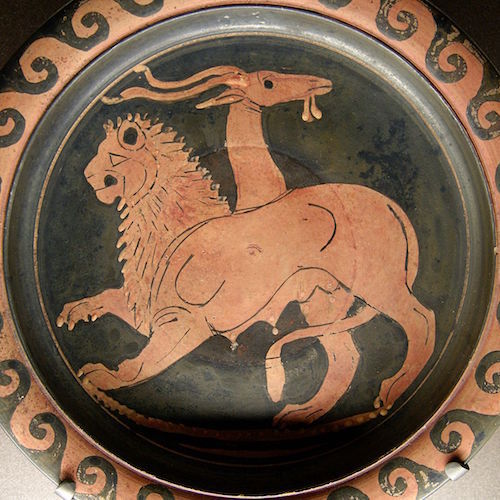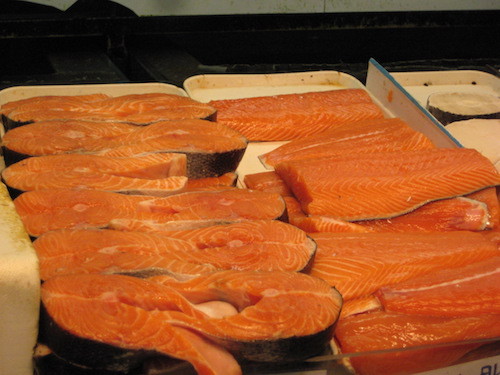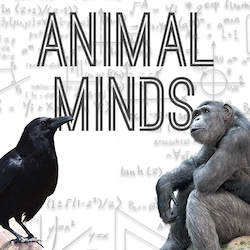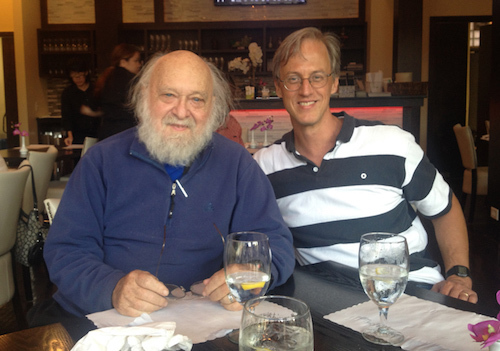Discovery Institute's Blog, page 103
January 8, 2016
Scientists Make Part-Human Animals -- Good Idea?

Public money is being used to pay for research that create animals that are part human. From the MIT Technology Review story:
Braving a funding ban put in place by America's top health agency, some U.S. research centers are moving ahead with attempts to grow human tissue inside pigs and sheep with the goal of creating hearts, livers, or other organs needed for transplants.
The effort to incubate organs in farm animals is ethically charged because it involves adding human cells to animal embr...
Casting a Design Light on Genetically Modified Salmon

The Food and Drug Administration has approved the first GM animal for human consumption. What could possibly go wrong with the AquAdvantage Salmon? Our Ann Gauger explained in comments to World Magazine:
AquaBounty engineered the fish by adding a growth-hormone gene from the Chinook salmon and a gene from the eel-like ocean pout. In natural circumstances, salmon produce growth hormone only during the spring and summer. The modified salmon produce growth hormone all year.Ann Gauger, molecular...
Can You Build WALL-E from Repeating Legos?

"A central question in protein evolution is the extent to which naturally occurring proteins sample the space of folded structures accessible to the polypeptide chain." Thus begins a new paper on sequence space for proteins, a concept that has been key to work by leading ID theorists Douglas Axe, Stephen Meyer, and William Dembski. This is the question: Out of the vast space of possible amino acid sequences, how many can fold into functional proteins? ID argues that functional space is such...
January 7, 2016
In Science Education, "Confusion" Can Be a Synonym for Stimulation

Writing at NPR's Cosmos and Culture blog, psychology professor Tania Lombrozo highlights the role that confusion can play in learning -- especially in science ("Sometimes Confusion Is a Good Thing"). This may seem paradoxical. Isn't dispelling confusion an aim of education?
In fact, Lombrozo argues, it may be helpful in some contexts. She refers to a study by Sidney D'Mello, Blair Lehman, Reinhard Pekrun, and Art Graesser in the journal Learning and Instruction. The researchers induced conf...
In the Netherlands, Doctors Are Now Approved to Euthanize Alzheimer's Patients

The culture of death is like the universe: It never stops expanding. Once killing is accepted as an answer to human suffering, there are always new fields to inhabit.
In the Netherlands, euthanasia is supposed to be strictly restricted to mentally competent people who repeatedly request to be killed, and even then, only when it is the only way to prevent suffering. That's always been bogus. For example, infanticide of seriously disabled and terminally ill babies is smiled upon by the society...
Does Intelligence Depend on a Specific Type of Brain?
Editor's note: Find the full "Animal Minds" series to date here.
 All life forms participate in some kind of intelligence and intentionality, in the sense that for billions of years they have sought to live and have adapted for that purpose. Nonetheless, animals that also demonstrate individual intelligence are orders of magnitude less intelligent than humans -- whether they are closely related to us physically (apes) or not (bird species).
All life forms participate in some kind of intelligence and intentionality, in the sense that for billions of years they have sought to live and have adapted for that purpose. Nonetheless, animals that also demonstrate individual intelligence are orders of magnitude less intelligent than humans -- whether they are closely related to us physically (apes) or not (bird species).
We know their intelligence by its effects, in the sa...
Remembering Leo Kadanoff

On October 26th, 2015, I received an email from a colleague of my former dissertation supervisor, Leo Kadanoff, informing me that Leo had died that morning. It's now some time since his passing, but I still would like to pay my respects to him.
I came to know Leo when I was a math graduate student in 1987. It was an uncertain time in my mathematical education. I had finished my qualifying work and spent a semester doing research in probability at Cornell in the fall of 1986. Back at the Univ...
January 6, 2016
As an Explanation of the Cambrian Explosion, the Oxygen Theory Takes a Lethal Blow

The oxygen idea had already taken blows, including from us, but this would seem to be the end of it. The notion was that rising oxygen levels permitted and therefore somehow spurred the Cambrian explosion, the geologically abrupt emergence of complex animal life less than 600 million years ago. It is as if the possibility of breathing deep was so enticing as to coax a vast infusion of biological information, needed to generate most known animal body plans, from nonexistence into existence. "...
From Animal Rights Activists, a Crazy Proposed Constitutional Amendment
The Humane Party, animal rights advocates, have published a proposed constitutional amendment. I quote it here not because I think it will be enacted, but because it illustrates the subversive belief system -- the absolutist ideology -- that drives "animal rights." From the press release:
Full Text of the Abolition Amendment to the U.S. Constitution
Section 1. Neither slavery nor involuntary servitude of any sentient being shall exist within the United States or any place subject to their ju...
What Origin-of-Life Researchers Forget

The origin-of-life field is often guilty of ascribing personality to molecules. You see this in the popular literature, but even the serious scientists slip into the habit. It takes the form of an invisible hand, directing the assembly of multiple parts like a foreman at a construction site. Need a membrane? Here are some fatty acids that can make a simple one for starters. Need a replicator? This RNA isn't great, but he can learn. Need proteins? We found some in this meteorite that are will...
Discovery Institute's Blog
- Discovery Institute's profile
- 15 followers




